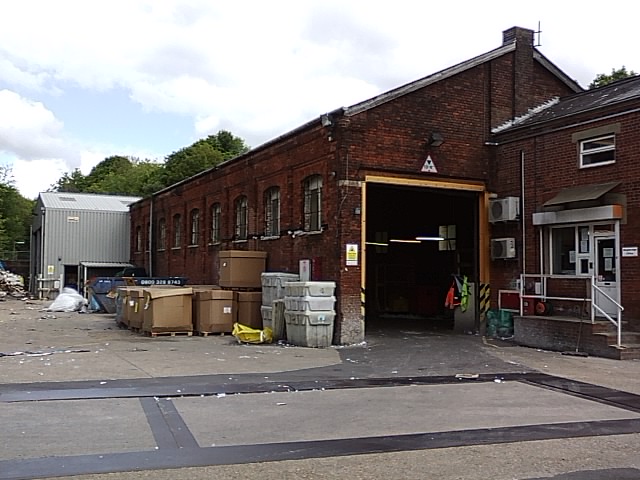St Giles Hill, Winchester Cheesehill Railway Station and the Didcot, Newbury, Southampton Railway
Prior to 1960 Winchester had two railway stations: the current mainline station (then known as Winchester City) on the west side of town, and a second known as Winchester Cheesehill located on the east side of town on Chesil Street below St Giles Hill.

The Ordnance Survey map below published in 1903 shows the line.

Winchester Cheesehill railway station.
Winchester Cheesehill Station was part of the Didcot, Newbury, Southampton railway (DNSR). It opened on 4 May 1885 and was originally named Winchester Cheesehill.

At the time it was the terminus of the line although it was planned to extend the line southwards to Southampton. The line was intended as a more direct north-south railway link from the Midlands to the expanding port of Southampton. The northern section from Didcot to Newbury opened in 1882, however, the company failed to secure funding to build the extension to Southampton and work was halted in1883 so that the company could concentrate on completing the line to Winchester. At this point, DNSR approached the Great Western Railway (GWR) for help as the company did not have the financial muscle to commence operations. GWR consented to operate the new line, and provided locomotives, rolling stock, and manpower. They hoped this would gain access to the port of Southampton to compete with their rival London South West Railway (LSWR). DNSR still needed an independent line to Southampton to be a going concern, but GWR failed to invest in its completion.
Finally, the LSWR fearing that the GWR might eventually finance the completion of the DNSR, offered a compromise. It proposed and built a connection line from the DNSR at Winchester into its LSWR Waterloo-Southampton line joining just north of Shawford Station. In return DNSR were to give up seeking an independent route to Southampton. The line via the LSWR built Hockley (Shawford) Viaduct was completed in 1891, and services from Didcot to Southampton began.
The viaduct was the work of LSWR’s Consulting Engineer W.L.Galbraith and constuctor Jos T. Firbank. It consists of massive piers constructed of concrete clad in brick. Each pier weighed about 650 tons The arches are built of brick.
Owing to the fact that GWR operated the line, Chesil station railway buildings were larger than those of any other DNSR stations (having been completed prior to GWR involvement), being built to GWR standards.


The station buildings were located on the northbound platform. At the northern end of the station, the line passed into the double-tracked Chesil tunnel. The station also included a loading bay and single siding at its southern end accessible from the northbound line.



The DNSW line had other railway stations close to Winchester, one at Kings Worthy and another as Sutton Scotney.

During WW1 the station was important as a transit point for troops arriving from the empire and the USA who within a few days departed for the Western Front in France. Some 2 million troops are estimated to have passed through Winchester at this time. During their time here they were housed in expensive camps at Morn Hill and Winnall Down.

The DNSR was absorbed by the GWR on 27 March 1923 when the Government set up the “Big Four“ (GWR, Southern, LMS and LNER) This resulted in the thorough working of GWR locos into the Southampton Terminus station.
The line was of considerable strategic importance in World War II as a route from the North to Southampton. Between 4 August 1942 and 8 March 1943 the section from Didcot to Newbury was closed so that double track could be laid, and passing loops on the single track between Newbury and Shawford Junction could be lengthened so that they could take 70-wagon goods trains. The line was to carry considereable military traffic for the invasion of Europe and in the year prior to D-Day 16,000 trains passed through Chesil Station on the way to joining the main line to Southampton at Shawford Junction.
After the Second World War, the DNSR returned to being a rural backwater line. At the railway nationalisation in1948, the line, as part of the former GWR, became part of the Western Region of British Railways.The station at Winchester was renamed from Winchester Cheesehill to Winchester Chesil on 26 September 1949. On 2 April 1950, the line south of Enborne Junction was transferred to the Southern Region, thus putting it under the same direct management as the South Western Main Line.
It was deemed unnecessary to have two lines that so closely paralleled each other. As passenger numbers declined during the 1950’s plans were made to close the line. Winchester Chesil was closed on 7 March 1960 as part of the Beeching plan. It was reopened for the next two summers from 18 June 1960 to 10 September 1960 and 17 June 1961 to 9 September 1961, for Saturday’s holiday traffic.
The line south of Newbury closed in 1965 and parts of the old track between Newbury and Winchester are now used by the A34

